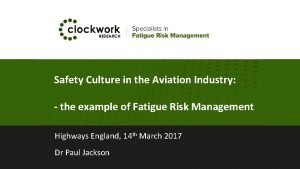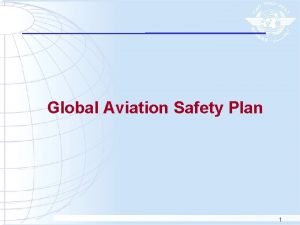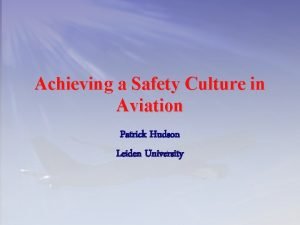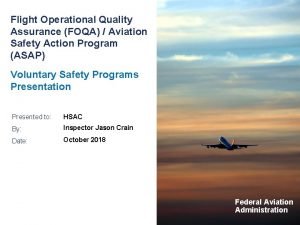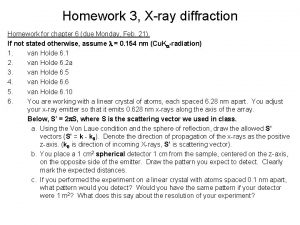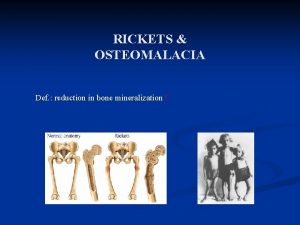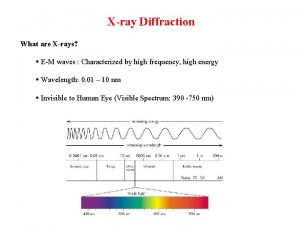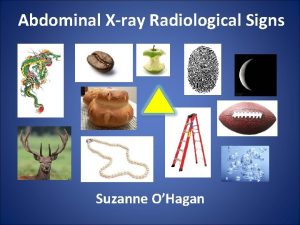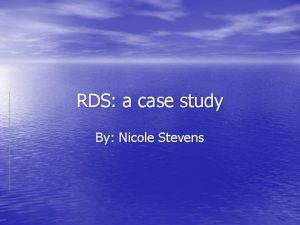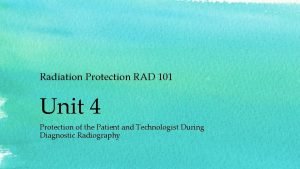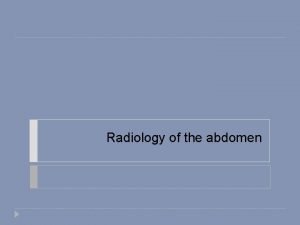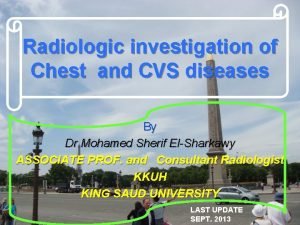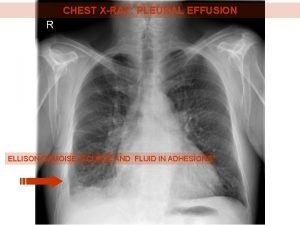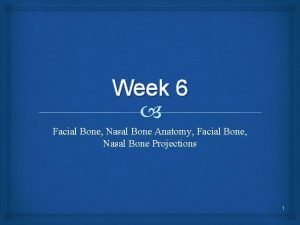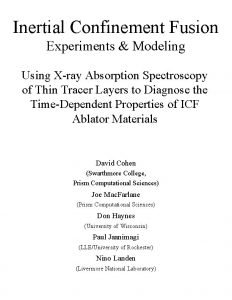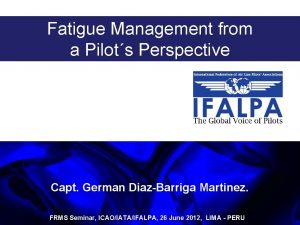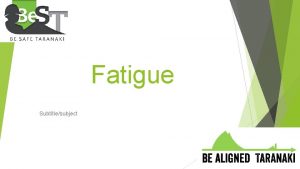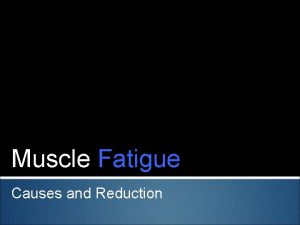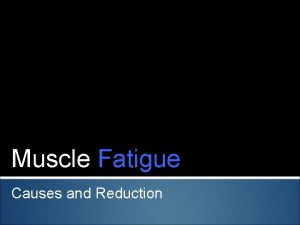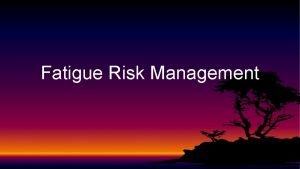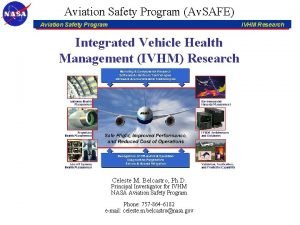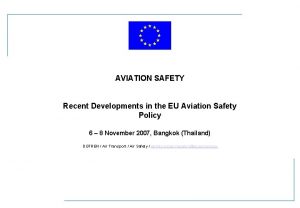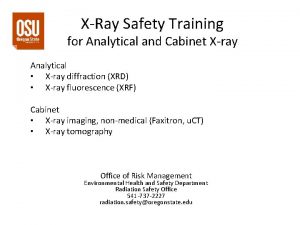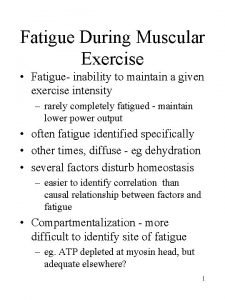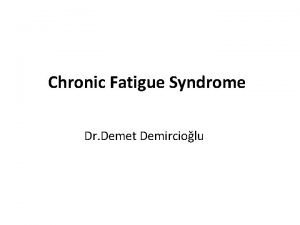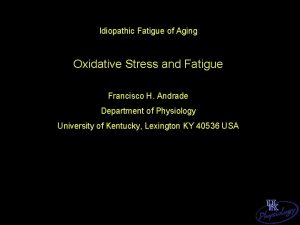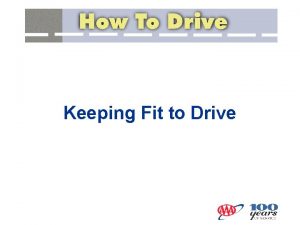An XRay of Fatigue in Aviation Safety Fatigue









































- Slides: 41

An X-Ray of Fatigue in Aviation Safety Fatigue Management from a Pilot´s Perspective Capt. German Diaz-Barriga Martinez. FRMS Seminar, ICAO/IATA/IFALPA, 26 June 2012, LIMA - PERU

Charles A. Lindbergh “The nose is down, the wing low, the plane is diving and turning. I've been asleep with open eyes. . . I kick left rudder and pull the stick back. . . My eyes jump to the altimeter. . . I'm at 1600 feet. The turn-indicator leans over the left - the airspeed drops - the ball rolls quickly to the side. . . My plane is getting out of control!”

Is Fatigue a Concern in Flight Operations? • Incidents – About 20 percent of reported incidents to NASA Aviation Safety Reporting System (ASRS) mention factors that are fatigue-related • Accidents – Hard to document, but NTSB cited fatigue as a factor in 1993 DC 8 accident – American 1420 at Little Rock – Colgan Air • Research

Can we measure fatigue ? • Fatigue, per se, can not be measured. • Alertness and degradation to alertness, on the other hand, can be measured, by response time in visual watchfulness, complex reactions and lost reactions • They can be compared to: – Blood alcohol content – Karolinska scale of sleep – Samn-Perelli fatigue scale.

NASA Fatigue Countermeasures Program • Since 1980, research on fatigue, sleep, and circadian rhythms – evaluated over 500 pilot volunteers – line operations, simulations, laboratory • Now providing feedback to the aviation industry – “Alertness Management in Flight Operations”

Primary Physiological Causes of Fatigue • Sleep loss • Circadian rhythm disruption

Fatigue’s affect on operations Circadian Rhythms Sleep loss Fatigue Effects of fatigue in aviation operations

Sleep and Sleep Loss

Charles A. Lindbergh “My mind clicks on and off. . . I try letting one eyelid close at a time when I prop the other open with my will. But the effort's too much. Sleep is winning. My whole body argues dully that nothing, nothing life can attain is quite so desirable as sleep. My mind is losing resolution and control. ”

What Research Shows • Sleep is a vital physiological function • Sleep loss is cumulative • Sleep loss and sleepiness can degrade essentially every aspect of human performance Sleepiness should be taken seriously

Sleep loss can affect performance like alcohol • After being awake for 18 hours, mental and physical performance on many tasks can be like having a blood-alcohol content (BAC) of 0. 05. • After being awake for 23 continuous hours, people perform as badly as people who have a BAC of 0. 12. – Dawson and Reid, as reported in Reason’s “Managing Maintenance Error. ” – BAC = Blood Alcohol Content

BAC Chart

In Mexico • El Artículo 100 del Reglamento de Tránsito del Distrito Federal, establece que "ninguna persona podrá conducir vehículos por la vía pública si tiene una cantidad de alcohol en la sangre superior a 0. 8 gramos por litro, o de alcohol en aire expirado superior a 0. 4 miligramos por litro.

How Sleepy Are You? • It is difficult for most people to accurately estimate their own fatigue level and alertness – It may actually be worse than you think

Sleep Changes with Age • Amount of sleep and structure of sleep change as a person gets older – Less deep sleep, and more disrupted sleep – Daily percentage sleep loss is 3. 5 times greater in long-haul pilots aged 50 -60, compared than pilots aged 20 -30

Quality versus Quantity • 8 hours of disrupted sleep can be like getting very little sleep

The “Body Clock” • Programmed for two times of maximal sleepiness during a 24 -hour period – 3 -5 AM and 3 -5 PM • Performance and alertness can also be decreased – 2 AM to 6 AM

According to NASA • "Sleep loss and sleepiness can decrease physical, psychomotor, and mental performance, and negative mood can increase and positive mood can decrease" • “It can lead to a reduced safety margin and increased potential for operational incidents and accidents. "

Alertness Management Strategies What crews can do to minimize the effects of fatigue

Go to FSF Aero. Safety World


Alertness Management Strategies • Preventive strategies – Used before duty and on layovers to reduce adverse effects of fatigue, sleep loss, and circadian disruption • Operational strategies – Used in-flight to maintain alertness and performance

Preventive Strategies • Begin a trip as rested as possible • At home – Maximize sleep 1 -2 days before departing on trip • Layovers, too • Strategic napping can be very effective – 45 minutes or less, if just before duty

Preventive Strategies • Alcohol consumption can have “major disruptive effects” on sleep quality • Exercise regularly, but avoid just before bedtime • If you can’t fall asleep in 30 minutes, get up and engage in some relaxing activity – Don’t just lay in bed and be frustrated

Operational Strategies • Strategic caffeine consumption – Best not to constantly drink caffeine before, during and after duty – Use it to best increase alertness – Don’t use it when already alert (start of duty or after a nap) – Avoid caffeine near bedtime • Sensible nutrition and stay hydrated

Know your Caffeine Content 8 -Ounce Coffee Beverage – Instant – Drip – Brewed – Expresso (4 ounce) – Decaf 8 -Ounce Tea Beverage – Instant – Brewed – Iced Tea – Decaf 25 – 102 milligrams 115 – 250 80 – 135 120 - 200 2 – 10 15 – 30 25 - 83 10 – 50 1 -5 Source: NBAA “Alert Traveler”

Know your Caffeine Content 12 -Ounce Soft Drinks – Cola – Orange Soda – Mountain Dew – Jolt 35 - 47 milligrams 40 55 71 Food – Frozen Desserts – Chocolate – Yogurt 8 - 85 5 - 31 1 - 45 Source: NBAA “Alert Traveler”

Stay Active In-flight • Engage in conversations with other crewmembers • Frequent stretching helps, too

NASA Recommends • Sleepiness can have severe consequences - take it seriously • People are different - tailor this information to your own needs • There is no one single answer - find out what works for you



ICAO Annex 6 Operation of Aircraft Fatigue. A physiological state of reduced mental or physical performance capability resulting from sleep loss or extended wakefulness and/or physical activity that can impair a crew member’s alertness and ability to safely operate an aircraft or perform safety related duties. Fatiga. Estado fisiológico de capacidad reducida de desempeño mental o físico resultado de la perdida de sueño o vigilia de sueño extendida y/o actividad física que puede deteriorar la vigilancia y habilidad de operar una aeronave o desempeñar trabajos relacionados a la seguridad de un tripulante

ICAO Annex 6 Operation of Aircraft 9. 6 Flight time, flight duty periods, duty periods and rest periods for fatigue management For the purpose of managing fatigue, the State of the Operator shall establish regulations specifying the limitations applicable to the flight time, flight duty periods, duty periods and rest periods for flight crew members. These regulations shall be based upon scientific principles and knowledge, where available, with the aim of ensuring that flight crew members are performing at an adequate level of alertness.


Aviation Rulemaking Committee

Beyond ARC – EASACAP 371…. . FRMS- should be implemented ULR flights • Must develop a process for a “Basic” and “ mature FRMS Should develop a Central FRMS office Advisory Circulars FRMS Flight Crew Rest Facilities

Fatigue Risk Management-en Español Fatigue Risk Management: Un método de administración empresarial de la fatiga que incluya proceso de medición , mitigación y gestión del riesgo de la fatiga FRMS: Un sistema de gestión basado en evidencia para el control del riesgo de fatiga

FRMS ¿Qué hay de nuevo?

FRMS – Who is responsible? • STATE – INDUSTRY – AIRLINE - INDIVIDUAL The Objective is always AN ACCEPTABLE LEVEL OF SAFETY …. . still We should capitalize on everybody’s experience Work as a team Gather and SHARE data Norm on a Scientific base Use of Technology

The New York Times http: //www. nytimes. com/ GLOBAL EDITION - Since 1879 LACK OF FATIGUE REGULATION KILLS 300 IN RUNWAY EXCURSION Even after aviation authorities were gathered in a safety seminar, early this year in LIMA, PERU, nothing was done. There is no fatigue Regulation and no one is even worried about the increased work hours for pilots and crewmembers. Market is dictating new labor rules everyday and authorities around the world are too startled to react, or play the game of the capitals. In efforts to cut costs, pilots are asked to be more productive, or they will be left jobless. Manufacturers are suggesting bizarre solutions too, they are offering new harnesses for passengers to travel standing up, and went as far as proposing only one pilot in the cockpit during long-range flights.

¿Preguntas? MUCHAS GRACIAS
 Nick sabatini & associates llc
Nick sabatini & associates llc Commercial aviation safety team
Commercial aviation safety team Safety culture in aviation industry
Safety culture in aviation industry Global aviation safety plan
Global aviation safety plan Generative safety culture in aviation
Generative safety culture in aviation Civil aviation safety authority
Civil aviation safety authority Transportation safety ppt
Transportation safety ppt Foqa aviation
Foqa aviation Xray file cabinet
Xray file cabinet Kub xray
Kub xray Hampton hump xray
Hampton hump xray Braggs law definition
Braggs law definition 't zand
't zand Michigan xray
Michigan xray Rickets x ray findings
Rickets x ray findings Picker xray
Picker xray Xray laser
Xray laser Bga xray
Bga xray Mary beth sanders
Mary beth sanders Xray laser
Xray laser Diffraction
Diffraction Xray lithography
Xray lithography Fadhl alakwaa
Fadhl alakwaa Signo rigler
Signo rigler Xray photoelectron spectroscopy
Xray photoelectron spectroscopy Pnuemothorax xray
Pnuemothorax xray Xray technique chart
Xray technique chart Apple core sign
Apple core sign Xray laser
Xray laser Yxlon xray
Yxlon xray Xray xml editor
Xray xml editor Prehistoric era
Prehistoric era Mmc xray
Mmc xray Subject contrast
Subject contrast Cvs chest x ray
Cvs chest x ray Difosfonate
Difosfonate Xray laser
Xray laser Facial
Facial Inertial confinement fusion lasers
Inertial confinement fusion lasers Triboluminescence scotch tape
Triboluminescence scotch tape Town x ray
Town x ray Gimp xray
Gimp xray


